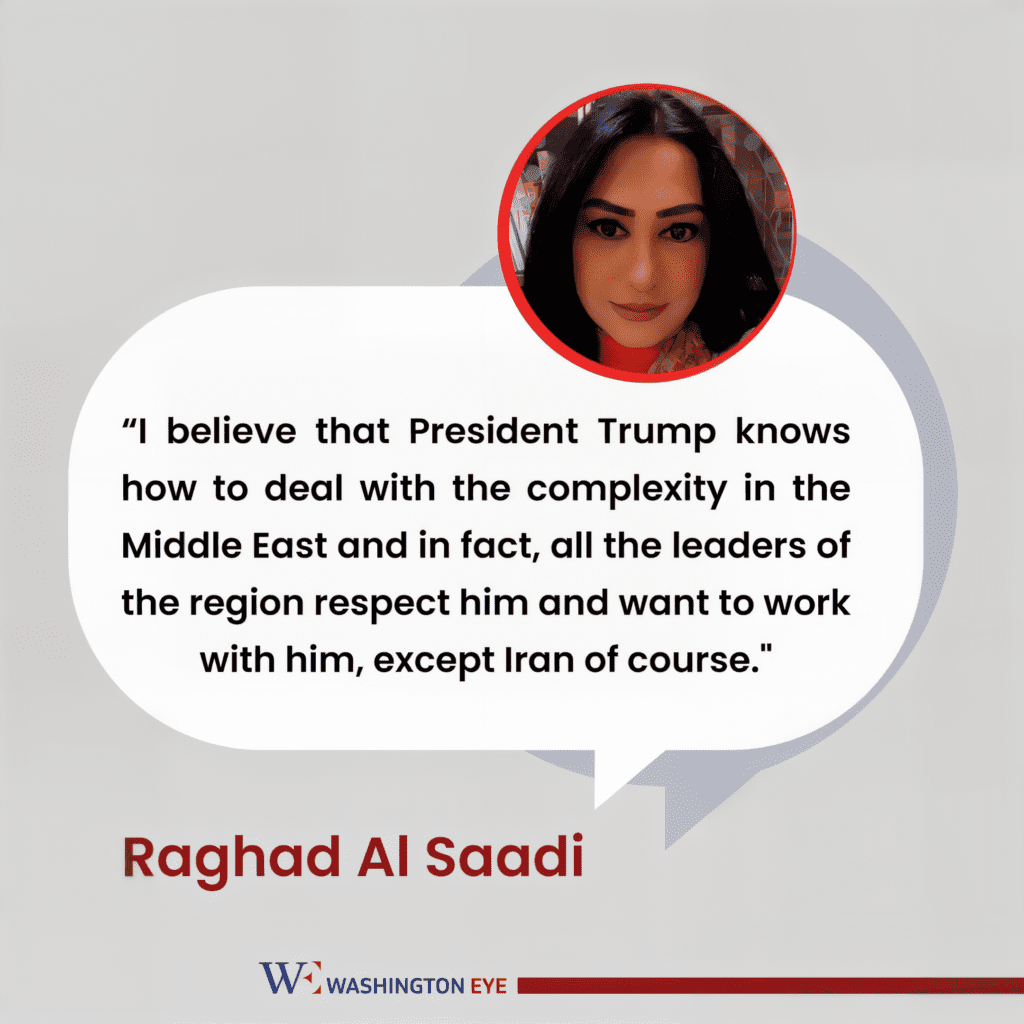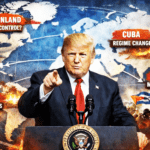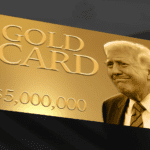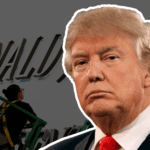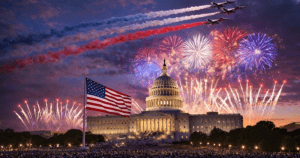The Middle East in 2025 is a region on the brink. Gaza is being pulverized by relentless airstrikes, with over 50,000 dead, according to aid groups. Yemen’s war has once again spilled into international shipping lanes, as Houthi rebels, backed by Iran, escalate attacks on Red Sea vessels. Tehran’s confidence has grown in step with past U.S. hesitancy, while oil prices swing erratically—affected by geopolitics, Trump-era-style tariffs, and the volatility of war.
In this fraught atmosphere, President Donald Trump—who won reelection in November 2024—prepares for a high-profile presidential trip to the region. While critics warn of his unpredictable diplomacy and polarizing persona, others see in his leadership the return of clarity and strength. One of those voices is Raghad Al Saadi, a respected expert on Middle East affairs and international law.
“I believe that President Trump knows how to deal with the complexity in the Middle East and in fact, all the leaders of the region respect him and want to work with him, except Iran of course,” Al Saadi told me.
Her words reflect a sentiment increasingly voiced in regional capitals. During Trump’s first term, Arab leaders understood where they stood. His actions—sometimes unconventional—were underpinned by a kind of brutal clarity. Whether through the Abraham Accords, pressure on Iran, or his transactional diplomacy, Trump’s message to the region was unmistakable: America defends its interests and rewards cooperation.
Today, Gaza remains at the heart of a mounting humanitarian crisis. Over 2 million civilians remain trapped. Ceasefires repeatedly collapse. Entire neighborhoods lie in ruins. While President Trump has expressed frustration with the drawn-out conflict, his administration is now grappling with balancing unconditional support for Israel and mounting international calls for a durable ceasefire. It was during this crisis that members of his administration floated the idea of a U.S. “takeover” of Gaza—an idea widely rejected by the American public. According to a recent Harvard CAPS-Harris Poll, 64% of Americans oppose such a move, and even more oppose sending troops to enforce it.
In Yemen, the Houthis have resumed their maritime campaign, using Iranian-supplied drones and missiles to threaten global shipping. The Biden administration’s decision to delist them as a terrorist group early in his presidency has come under renewed scrutiny. Now, under Trump, the U.S. military is striking Houthi targets and coordinating with regional navies to keep the Red Sea open. These actions signal a return to deterrence—a principle largely absent in recent years.
Iran, meanwhile, continues to push the boundaries. Its enrichment program remains a concern, and its proxies in Lebanon, Syria, and Iraq are more emboldened than ever. Israeli officials warn of an unprecedented threat matrix stretching from Hezbollah in the north to Houthi rebels in the south. For Tehran, the shift from diplomatic engagement under Biden to “maximum pressure” under Trump is familiar—and unwelcome. Already, the Trump administration has reimposed sanctions, moved naval assets into the region, and warned Iran against further escalation.
Trump’s return has also sent shockwaves through energy markets. His revived trade war with China—complete with new tariffs—has caused oil demand forecasts to dip, pushing prices lower. At the same time, geopolitical risk premiums are driving temporary spikes, as markets brace for conflict. The result? Volatility. Gulf states are concerned, not just about prices but about planning amid uncertainty.
That’s why President Trump’s upcoming visit to key allies in the Middle East matters. This will be his first as returning president, and expectations are high. Many regional leaders—particularly in the Gulf—respect Trump not because he is feared, but because he speaks in strategic terms they understand: sovereignty, security, and shared interests. He does not lecture; he negotiates.
What the region needs today is not a president who is feared, but one who is respected—and one who knows how to wield the full spectrum of American influence: diplomacy, economic power, and military deterrence. If President Trump can pair his instinct for dealmaking with a broader strategic vision, he may yet restore confidence in America’s role as a stabilizing force.
Raghad Al Saadi’s observation underscores a deeper truth: predictability and resolve are prized commodities in this region. Trump, for all his faults, got that.
